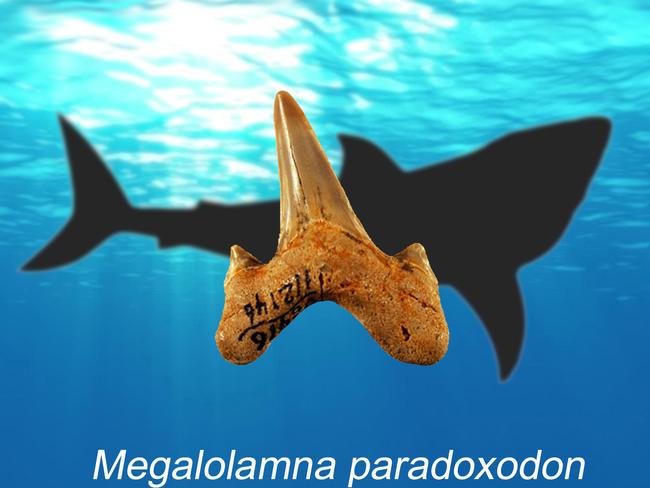Researchers identify new shark species, thought to be related to the infamous Megalodon
SCIENTISTS have identified a new shark species, thought to be related to the infamous super predator Megalodon.

A NEWLY discovered prehistoric shark species which grew to about the size of a car is believed to have patrolled the ocean around 20 million years ago.
The large new species has been identified and named by researchers from DePaul University in Chicago and is likely related to the largest shark that ever lived — the infamous Megalodon.
The now extinct shark has been named Megalolamna paradoxodon and scientists made the discovery based on fossilised teeth found on the east and west coast of the US, Japan, and Peru.
The shark lived during the early Miocene epoch about 20 million years ago and belongs to a shark group called Lamniformes, according to researchers who described the new species in the journal Historical Biology this week.
Modern-day great white sharks and mako sharks also belong to the Lamniformes group, but the new species is more specifically part of the Otodontidae family, which contains the iconic extinct superpredator Megalodon.
“It’s quite remarkable that such a large lamniform shark with such a global distribution had evaded recognition until now, especially because there are numerous Miocene localities where fossil shark teeth are well sampled,” said Kenshu Shimada, palaeobiologist and lead author of the study.


A handful of tooth samples about five centimetres long were retrieved from California, North Carolina, Japan, and Peru. From these samples scientists calculated that the shark likely swam in shallow waters in mid-latitudes, in both the Atlantic and Pacific oceans.
The name paradoxodon means paradoxical teeth and comes from the fact that the shark appears to emerge suddenly in the geological record with a yet unresolved nearly 45-million-year gap from when Megalolamna possibly split from its closest relative Otodus, the university said.
While certain dental features point to otodontid lineage, the fossils also look like oversized teeth of the modern-day salmon shark that belongs to the genus Lamna.
The teeth also allowed the researchers to posit the rough size of the shark, although experts have been quick to point out that such estimates are quite speculative.
The shark’s massive Megalodon cousin may have reached more than 10 metres in length, but the Megalolamna paradoxodon was a shark much closer to modern day proportions, coming in at about four metres long — similar to a modern day great white shark.
The species had grasping-type front teeth and cutting-type rear teeth likely used to seize and slice medium-sized fish, researchers said.




